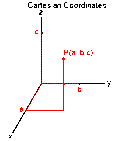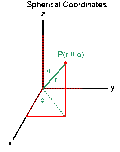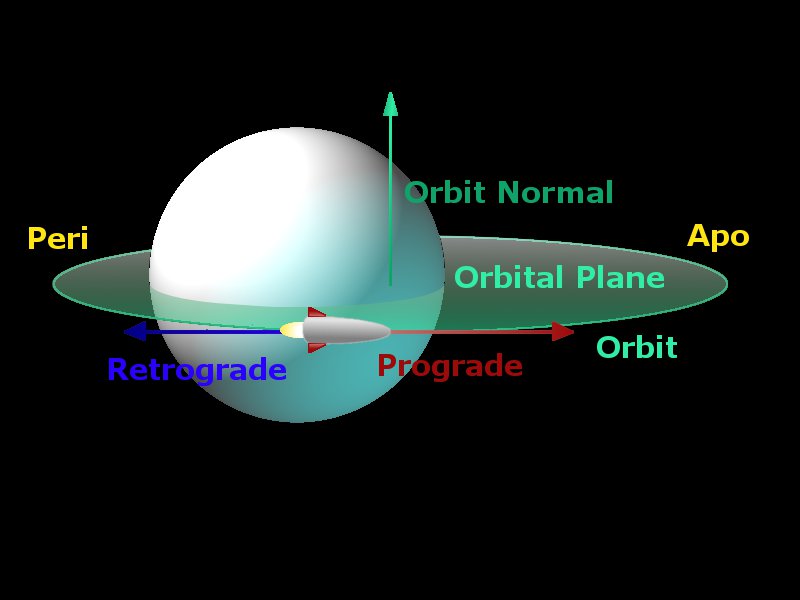Terminology
From Kerbal Space Program Wiki
Template:Island In KSP, there are many terms pertaining to orbiting and physics that often can be confusing. Consider this a cheat sheet to help you get started down the road to being a full fledged astronaut!
Contents
Helpful Terms
Mathematic & Geometric
- Scalar: A single value without a direction. Scalars are usually followed by a unit of measurement that tells what the scalar's dimension is. Ie. 3 m/s is a speed, 3 m is a length, 3 s is a duration of time.
- Vector: A set of a direction and a value. Ie. heading and speed together give a velocity.
- Vectors can numerically only be expressed in the presence of a co-ordinate system. How a vector is expressed depends on how the co-ordinate system is set up.
- The following physical qualities are all vectors: velocity, acceleration, force,
- A 3D Co-ordinate systems needs:
- A point of reference. This is your Origo.
- 3 base-vectors. These give your base unit of measurement along an axis and the direction of said axis.
- A Mix of 3 scalars, that could be either angles or co-ordinates to express locations in your co-ordinate space.
- Co-ordinate systems using only co-ordinates are Cartesian.
- Co-ordinate systems using only angles are Polar.
- Normal vector: A vector perpendicular to a plane.
- Elliptical: Oval shaped, often in reference to your orbit.
Orbital Terms
- Orbital Plane: The imaginary disk described by the path of an orbit around a body (usually used when dealing with inclinations).
- Orbit normal: A normal vector of the Orbital Plane. Produced by cross multiplying the ship's velocity and gravity. Since this follows the right hand rule, from a perspective where the ship is orbiting counter-clockwise it will point "up", while for a ship orbiting "clockwise" it will point down.
- Reference Plane: Any plane used as a reference for describing your current orbit. For local orbits around a planet, this is often the equatorial plane. When multiple bodies in a solar system are involved, the ecliptic plane can be used. For intercepting another orbiting body, the orbital plane of the body to be intercepted is used. An orbital plane can be fully described by giving the inclination and the longitude of the ascending node relative to a reference plane.
- Inclination: The angle between an orbital plane relative to a reference plane.
- Orbital Nodes: specific points-of-reference in any orbit such as Apoapsis, Periapsis, Crossing points with other orbits, etc.
- Periapsis: In an elliptical orbit, the point of the orbit closest to the planet.
- Apoapsis: In an elliptical orbit, the point of the orbit farthest from the planet.
- Peri* and Apo*: When speaking of orbits, oftentimes you replace the Apsis of Periapsis and Apoapsis with something signifying which planet you are speaking of (In this game, kee and kerb are both in common use. i.e. Perikee/perikerb and Apokee/Apokerb when talking about orbiting the starting planet.
- Ascending Node: The point at which the orbit crosses the reference plane moving north. Here, "north" means the direction of the orbit normal of the reference plane.
- Descending Node: The point at which the orbit crosses the reference plane moving south.
- Eccentricity: A Scalar of how non-circular an orbit is.
- ecc=0 => circular orbit.
- 0<ecc<1 => elliptical orbit.
- ecc=1 => parabolic orbit - this is an escape orbit.
- ecc>1 => hyperbolic orbit - this is an escape orbit.
- Semi-major axis: The major-axis is the long axis of an elipse, and the semi-major axis is half this. The semi-major axis is calculated in KSP from sma = 600km + (Aa + Ap) /2 - i.e. it's the average of the Apokee and Perikee computed relative to the center of the planet. All orbits with the same semi-major axis have the same period, regardless of their eccentricity.
- Sub-Orbital : Any trajectory that will lead an object (rocketload of kerbals) back to the ground.
- Prograde: The "Direct" direction of your orbital path. Since orbits are elliptical, it's actually the tangent of the orbit where the ship is.
- Retrograde: The reverse of Prograde, "backwards".
- Zenith: "Up" in ground-relative coordinates, i.e. the direction your rocket points at when at the launchpad, aka: "the highest point in the sky".
- Nadir: opposite direction of "Zenith".
A quick picture to help with some of the explanation:
Space Maneuvers
- Circularizing: a manouver (firing of the engines) that makes an orbit circular. This is usually achieved by a burn close to Apoapsis.
- Re-entry: the part of a rocket's flight where it hits atmosphere at high speed and uses the drag to decelerate the vessel back into a groundwards trajectory (this usually gets very hot, depending on speed - since air heats up when compressed rapidly by a fast-moving object).
- Burn: firing of the engines, usually to alter trajectory in some way.
- Retroburn: A burn performed "backwards", e.g. with the engines facing towards prograde and nose towards retrogade (hence the name). This is used to lower the velocity of the rocket and the height of the orbit, either to adjust to a new orbit or to put the rocket on a sub-orbital path home.
Physics
- Trajectory: A trajectory is the path that a moving object follows through space as a function of time.
- Ballistic trajectory: A falling object's trajectory is ballistic. In rocketry it usually indicates that the object in question is only influenced by gravity and does not exert any force (ie. thrust) of its own.
- Orbit: When an object has sufficient tangential velocity (and is outside the atmosphere, so drag won't slow it down) so that it will keep falling "next" to the planet (never touching ground) its trajectory is called an orbit.
- Stable orbits are elliptical (a circle is an ellipse with zero eccentricity).
- If the objects tangential speed exceeds escape velocity it's orbit will be either para- or hyperbolic.
- Velocity: Rate of change of your position. Your speed and direction. Velocity is a vector. It's unit of measurement is "m/s".
- Tangential velocity: The component of your velocity that's perpendicular to your trajectory. Instantaneous velocity - velocity when the time of measurement approaches zero - is always tangential to your trajectory.
- Escape Velocity: The velocity needed to escape a given planets gravity well.
- Acceleration: Rate of change to your velocity. Acceleration is a vector. It's unit of measurement is "m/s2".
- G's: A measurement of force as expressed in the sea-level force of Earth's gravity. In other words, right now you're under 1 G. 2 G's is equivalent to twice earths gravity at sea level, and so on.
- Gravity: The force exerted by all objects with mass. Very weak. Usually only objects with very high mass - ie. planets, moons - have any noticeable effect. Diminishes with the square of distance from the center of mass. So for an object twice as far, experiences only 1/22 = 1/4 of the gravity.
- Gravity Well: The area around a planet effected by gravity. Actually extends to infinity, but for practical purposes only significant within its Sphere-Of-Influence.
- Sphere-Of-Influence: The radius around a celestial body where its gravity well is non-neglectable.
- Energy: The energy of an object in an orbit is the sum of it's potential and kinetic energy. Potential energy is Ep = - GMm/R and Kinetic Energy Ek = (1/2) m v2 where G is the gravitational constant, M is the mass of the planet, m is the mass of the vehicle, R is the distance from the center of the planet and v is the velocity. So E = (1/2) m v2 - GMm/R . When the energy is greater than zero the vehicle is on an escape trajectory. All orbits with the same semi-major axis have the same energy.


